CH HSS sparks geomagnetic storm, G2 – Moderate warning

Geomagnetic storms caused by negative polarity, south polar coronal hole high speed stream (CH HSS) reached G1 – Minor levels early Tuesday, February 27, 2018. Solar wind parameters are expected to further increase today and a G2 – Moderate geomagnetic storm warning was issued.
Solar wind parameters over the past 24 hours were indicative of an overall slow, but mildly disturbed environment and likely proximity to the heliospheric current sheet (HCS). Total IMF strength was variable and ranged from 6 to 8 nT early Monday morning, February 26, but decreased to from 1 to 6 nT after about 09:00 UTC. The Bz component was variable with a few prolonged periods of southward direction. Solar wind speed was variable and ranged from 475 – 375 km/s before it started increasing again around 20:35 UTC. The phi angle oscillated frequently between sectors.
Solar wind speed peaked at 493 km/s just before 06:00 UTC and the parameters are still disturbed due to connection with an extension of the negative polarity, south polar CH HSS. Solar wind speed is anticipated to remain elevated on February 28, but will likely begin to decrease as the CH HSS begins to rotate away from a geoeffective position.
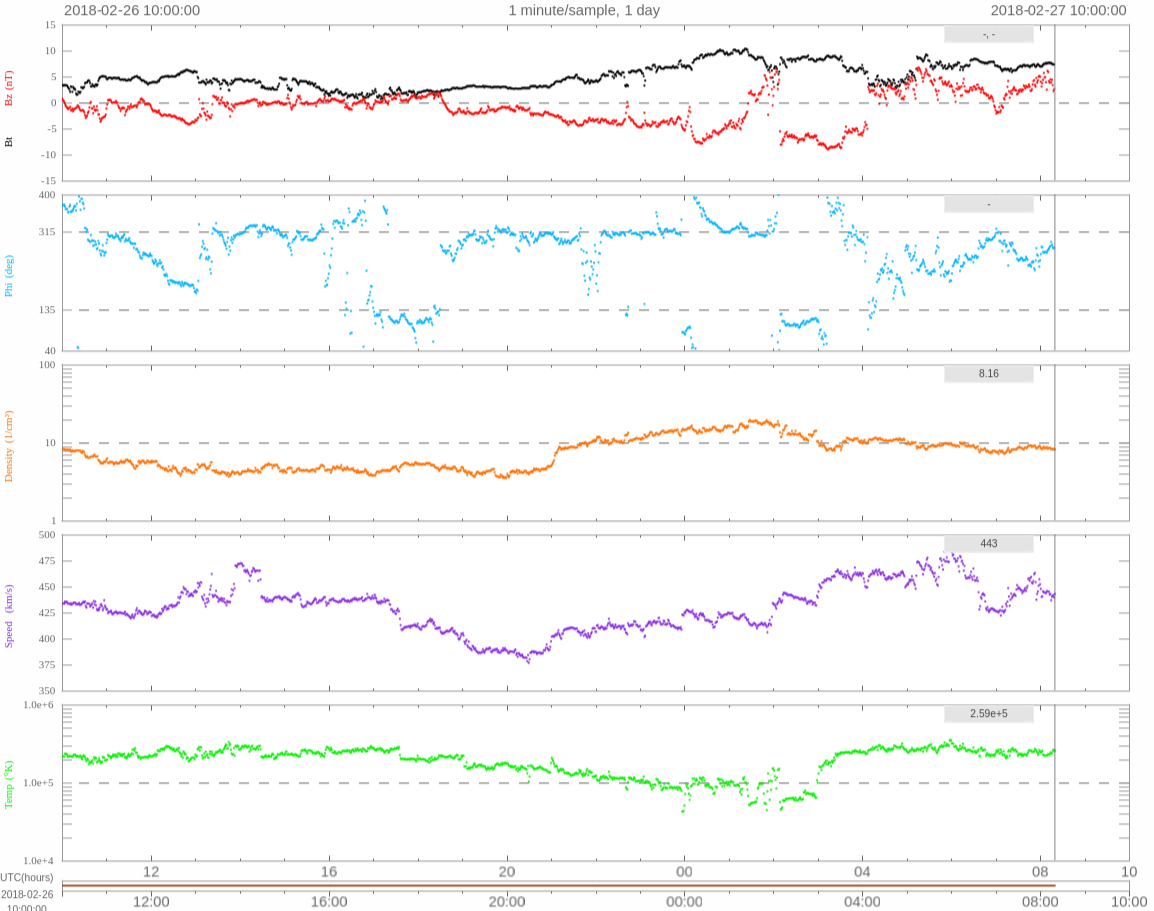
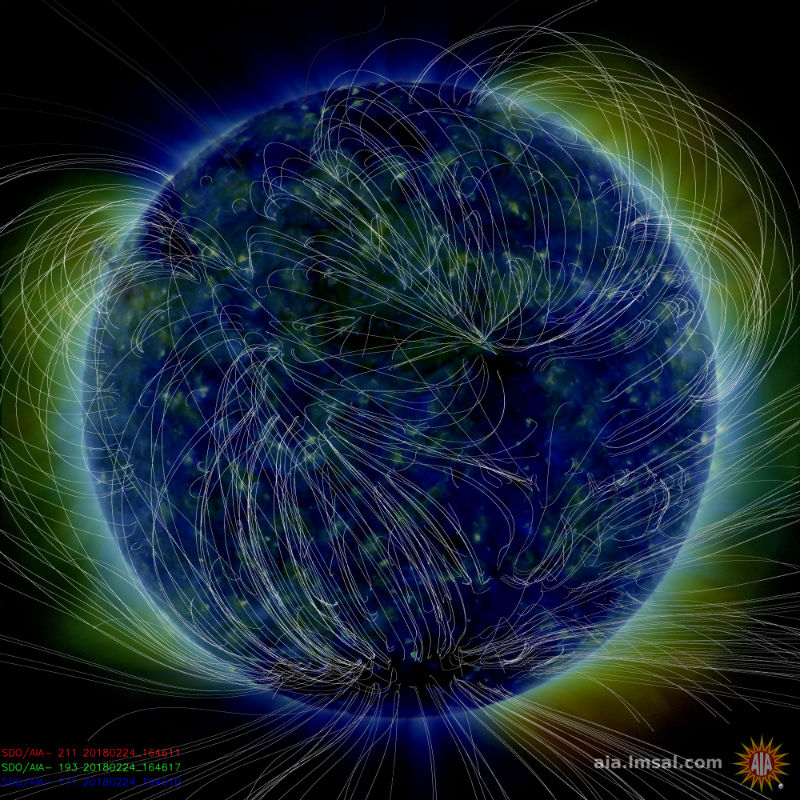
G1 – Minor geomagnetic storm threshold was reached at 04:44 UTC today. G2 – Moderate geomagnetic warning was issued 05:02 UTC and is valid through 09:00 UTC.
Quiet to unsettled conditions are expected on February 28 as CH HSS influences continue, but wane.
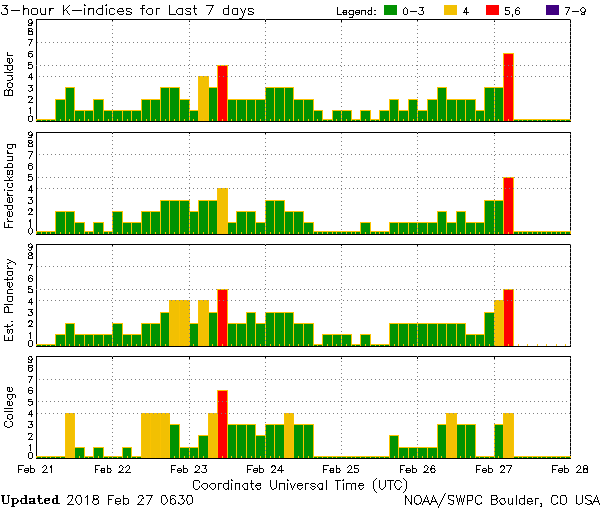
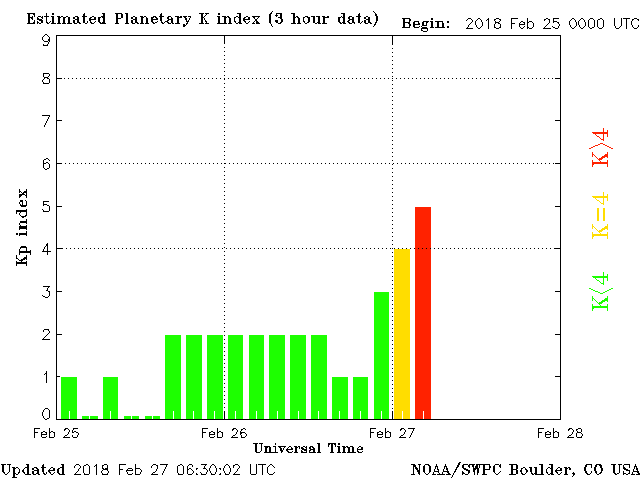
Solar activity was very low over the past 24 hours. New NOAA/SWPC Region 2700 (N06W13, Cro/beta) was assigned to an emergent, bipolar spot group on February 26. The spot group steadily matured but stalled growth by the end of the day. Very little magnetic shear was present and the region produced only a few minor B-flares; the largest being a B3/Sf at 15:51 UTC, February 26. No Earth-directed coronal mass ejections were observed in available coronagraph imagery.
Solar activity is expected to remain very low, with a slight chance for C-class flares over the next three days due primarily to the slight flare potential of Region 2700.
The greater than 2 MeV electron flux was at normal to high levels over the past 24 hours, with a maximum flux of 2,130 pfu at 21:00 UTC, February 26, and is expected to continue at moderate to high levels over the next 3 days. The greater than 10 MeV proton flux remained at background values and is expected to remain like that.
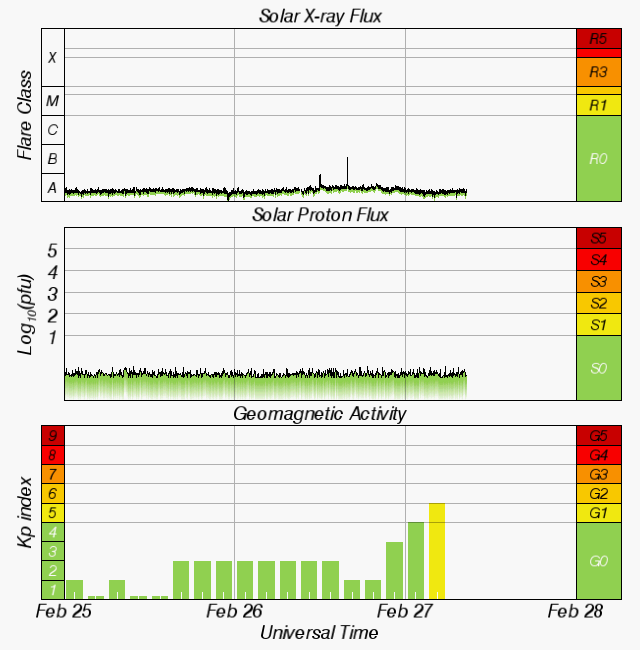

Taken by Andrei (Enjoy The Arctic) on February 26, 2018 @ Tromso, Norway. Via SpaceWeather
SWPC Alerts and Warnings
Space Weather Message Code: WARK06
Serial Number: 414
Issue Time: 2018 Feb 27 0502 UTC
WARNING: Geomagnetic K-Index of 6 expected
Valid From: 2018 Feb 27 0501 UTC
Valid To: 2018 Feb 27 0900 UTC
Warning Condition: Onset
NOAA Scale: G2 – Moderate
NOAA Space Weather Scale descriptions can be found at
www.swpc.noaa.gov/noaa-scales-explanation
Potential Impacts: Area of impact primarily poleward of 55 degrees Geomagnetic Latitude.
Induced Currents – Power grid fluctuations can occur. High-latitude power systems may experience voltage alarms.
Spacecraft – Satellite orientation irregularities may occur; increased drag on low Earth-orbit satellites is possible.
Radio – HF (high frequency) radio propagation can fade at higher latitudes.
Aurora – Aurora may be seen as low as New York to Wisconsin to Washington state.
***
Space Weather Message Code: ALTK05
Serial Number: 1208
Issue Time: 2018 Feb 27 0444 UTC
ALERT: Geomagnetic K-index of 5
Threshold Reached: 2018 Feb 27 0444 UTC
Synoptic Period: 0300-0600 UTC
Active Warning: Yes
NOAA Scale: G1 – Minor
NOAA Space Weather Scale descriptions can be found at
www.swpc.noaa.gov/noaa-scales-explanation
Potential Impacts: Area of impact primarily poleward of 60 degrees Geomagnetic Latitude.
Induced Currents – Weak power grid fluctuations can occur.
Spacecraft – Minor impact on satellite operations possible.
Aurora – Aurora may be visible at high latitudes, i.e., northern tier of the U.S. such as northern Michigan and Maine.
Featured image: Taken by Andrei (enjoy the arctic) on February 26, 2018 @ Tromso, Norway. Credit: EnjoyTheArctic

Commenting rules and guidelines
We value the thoughts and opinions of our readers and welcome healthy discussions on our website. In order to maintain a respectful and positive community, we ask that all commenters follow these rules.